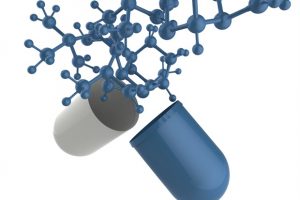Electro-chemical bandages could be an effective alternative to antibiotics for managing wound infections

According to new research by investigators at the Mayo Clinic and Washington State University, e-bandages could be an effective alternative to antibiotics for managing wound infections. The findings are presented at ASM Microbe 2022, the annual meeting of the American Society for Microbiology.
In a recent study conducted in mice, novel hydrogen peroxide producing bandages with electrical/chemical properties (electro-chemical bandages or e-bandages), under the control of wearable voltage devices, reduced methicillin-resistant Staphylococcus aureus (MRSA) biofilm bacteria present in the wound by 99 percent after 2 days of treatment.
In people with wound injuries, typical management includes cleaning the wound using various solutions – including hydrogen peroxide, applying antiseptic creams or ointments, and at times, administering antibiotics. If wounds do not heal, they may progress to a chronic wound stage which can be especially tough to manage.
Research has shown that chronic wounds often harbor biofilms (communities of microorganisms living together attaching to surfaces). Bacteria present in such biofilms can thrive and resist the effects of antibiotic treatment, which is why they are difficult to treat even with prolonged antibiotic treatment. Prolonged use of antibiotics can result in selection of antibiotic-resistant bacteria. The presence of biofilms in wounds also delays wound healing; biofilm-harboring wounds are common in patients who are older in age, diabetic or immuno-compromised.
Wound infections are common and can be challenging to treat. Thus, it is important to develop new strategies, technologies and treatment regimens that do not rely on antibiotics."
Yash S. Raval, PhD, Study Lead Author and Senior Research Fellow, Division of Clinical Microbiology, Mayo Clinic in Rochester
Hydrogen peroxide solution is used to clean wounds. Although hydrogen peroxide has antibacterial and wound healing properties, hydrogen peroxide solution is unstable chemically and therefore, its effects are short-lived. Dr. Raval and colleagues have developed e-bandages to continuously produce hydrogen peroxide as a treatment of wound infections
"Specifically, we have developed and examined antibacterial properties of a novel kind of bandage which continuously produces hydrogen peroxide through application of a specific negative voltage," said Dr. Raval.
In the study, the researchers created wounds on mice and infected them with MRSA to establish wound MRSA biofilms. They then treated infected wounds with the wearable e-bandage system. The hydrogen peroxide-producing e-bandages reduced the bacterial biofilm population by 99 percent.
ASM Microbe is the annual meeting of the American Society for Microbiology, held June 9-13, 2022, in Washington, D.C.
The American Society for Microbiology is one of the largest professional societies dedicated to the life sciences and is composed of 30,000 scientists and health practitioners. ASM's mission is to promote and advance the microbial sciences.
ASM advances the microbial sciences through conferences, publications, certifications, educational opportunities and advocacy efforts. It enhances laboratory capacity around the globe through training and resources. It provides a network for scientists in academia, industry and clinical settings. Additionally, ASM promotes a deeper understanding of the microbial sciences to diverse audiences.
American Society for Microbiology
Posted in: Medical Science News | Medical Research News | Pharmaceutical News
Tags: Antibiotic, Bacteria, Biofilms, Chronic, Hydrogen Peroxide, Laboratory, Microbiology, pH, Research, Staphylococcus aureus, Wound, Wound Healing
Source: Read Full Article